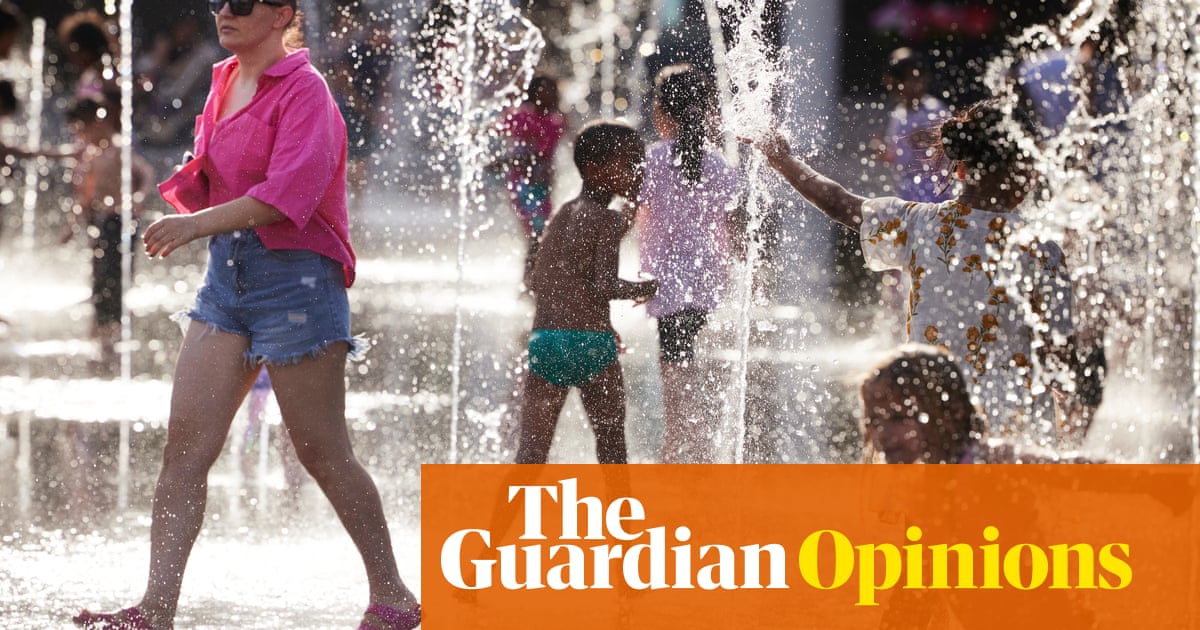There’s nothing like a boiling hot summer with an energetic small child to make you acutely aware of the need for outdoor space. We are lucky to have a garden, albeit an overgrown one that isn’t exactly child-friendly, so, like many parents, we mostly rely on public space in order for him to play and get the huge amount of exercise he needs. And, if you are able-bodied, there’s nothing like having a child to make youlook at public spacesdifferently.
Steps instead of ramps. A lack of benches on which to feed a baby, or give a toddler their snack. No shade. No access to toilets or changing tables. Nowhere to fill up a water bottle. No fences or gates dividing pedestrianised space from a busy road, or a deep body of water, or myriad other hazards. These are just some of the things that start to matter. Before your eyes, the urban environment becomes transformed and often inhospitable. Things such as locked playgrounds (I’m looking at you, Camden council – Falkland Place playground has been closed for literally months at this point) have the potential to ruin your morning. In a heatwave, broken splash pads and locked paddling pools (most recent personal disappointments include Brighton and Leamington Spa) feel like acts of particular cruelty.
It’s no wonder, then, that the privatised “public” spaces that have become common across cities, all of which share a certain slick homogeneity, start to feel appealing. Before I had a child, I disliked the new development atCoal Drops Yardin London’s King’s Cross. Walking around it when it reopened, it felt cold and dystopian. That, though, was before the people arrived. Now it feels safe, lively and vibrant, full of children shrieking with delight as they run in and out of the Granary Square fountains. It’s a child-friendly space that isn’t child-dominated: from the food market to the outdoor cinema to the students practising dances and drinking tinnies by the canal, it feels happily communal.
But in the UK, actual public, child-friendly space, as opposed to “pseudo-public space” created from private investment, such as the King’s Cross redevelopment, is very much a postcode lottery. The first play fountains I ever encountered – in Piccadilly Gardens in Manchester, which had been redesigned ahead of the Commonwealth Games in 2002 – used to be fantastic, but for years now this has been an areadogged by antisocial behaviour. Promises of redevelopment have stalled because ofbudgeting issues. The city deserves better.
As temperatures increase, we should look to the continent for inspiration. Although I hoped that the increased focus on public space during the pandemic would result in more pedestrianised areas containing outdoor seating and greater investment in outdoor spaces, that hasn’t always materialised. We may never have the weather, or national temperament, that turns us into thesort of societythat revolves around a piazza, but the Spanish and Italian models for public space and how they integrate children’s play with adult socialising, such as those lovely shaded playgrounds fringed with bar and cafe tables that have so impressed tourists they have become asocial media phenomenon, are inspiring.
To an extent, they exist that way because there’s a recognition that the middle of the day is too hot for kids to play outside, and so the evenings become a time for everyone, with spaces blurred between adult drinking and dining, and children’s play and exercise. That is increasingly becoming the case here, too. It feels as though it’s becoming more common to see children in the playground until quite late in the evening, so why not start to incorporate urban design around the adults who care for them?
I am not one of those people who thinks that everything is better in other countries. Just today I was reading the comments under a video about Italian children crashing out late at night in their prams while the grownups socialised. The now-adults were reflecting on how much, as children, they disliked that, how they didn’t actually want to play out in the piazza until midnight, they just wanted a nice, quiet bed to lie in. Meanwhile, I’m doing my son’s bedtime routine at 7pm when it’s still light outside. Surely there has to be a middle ground, a public space that caters to both adults and children during the light evenings that feels safe and inclusive?After all, heatwaves are only going to get more and more common.
Rhiannon Lucy Cosslett is a Guardian columnist and author. HerRepublic of Parenthoodbook will be published this summer
